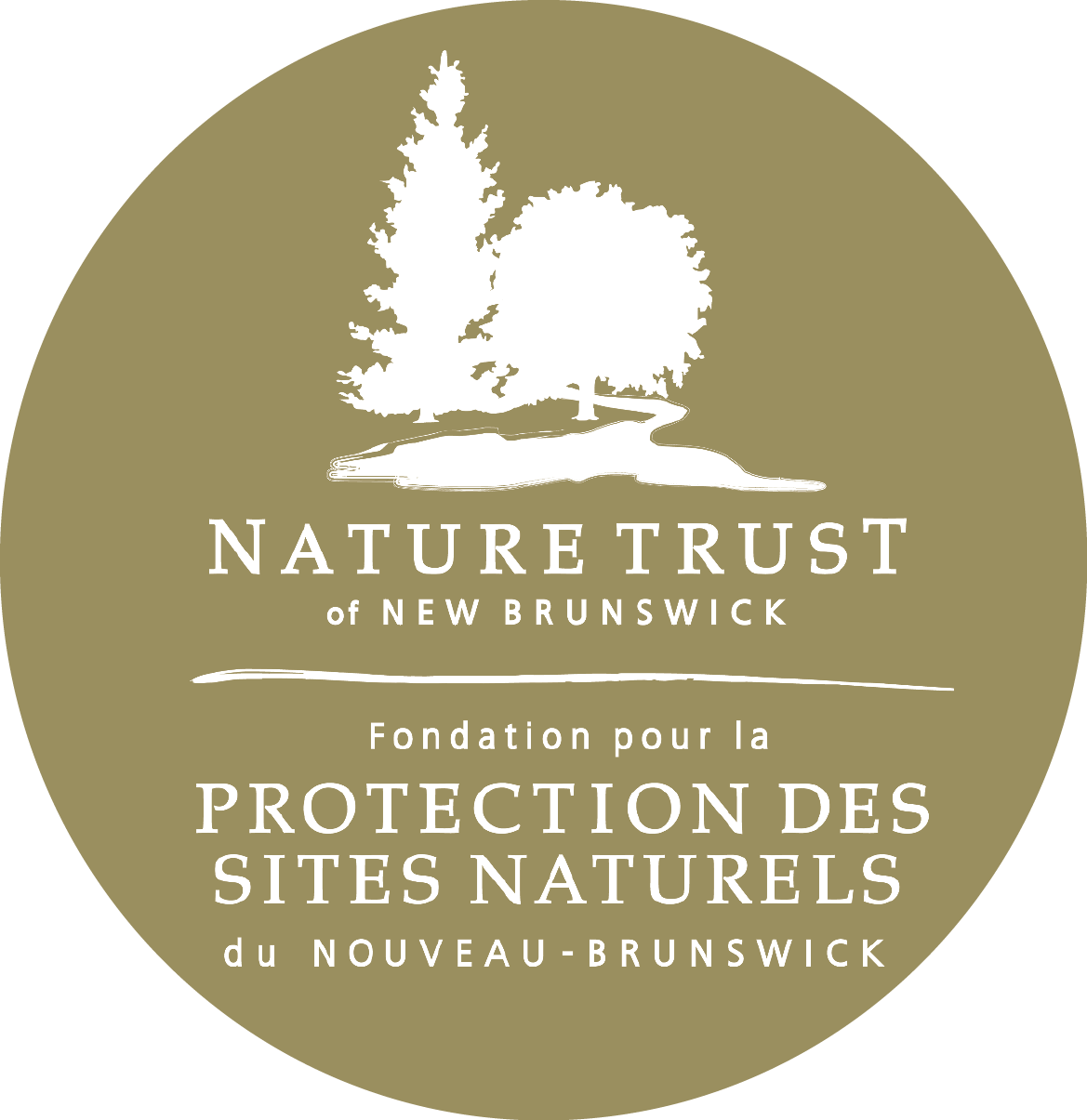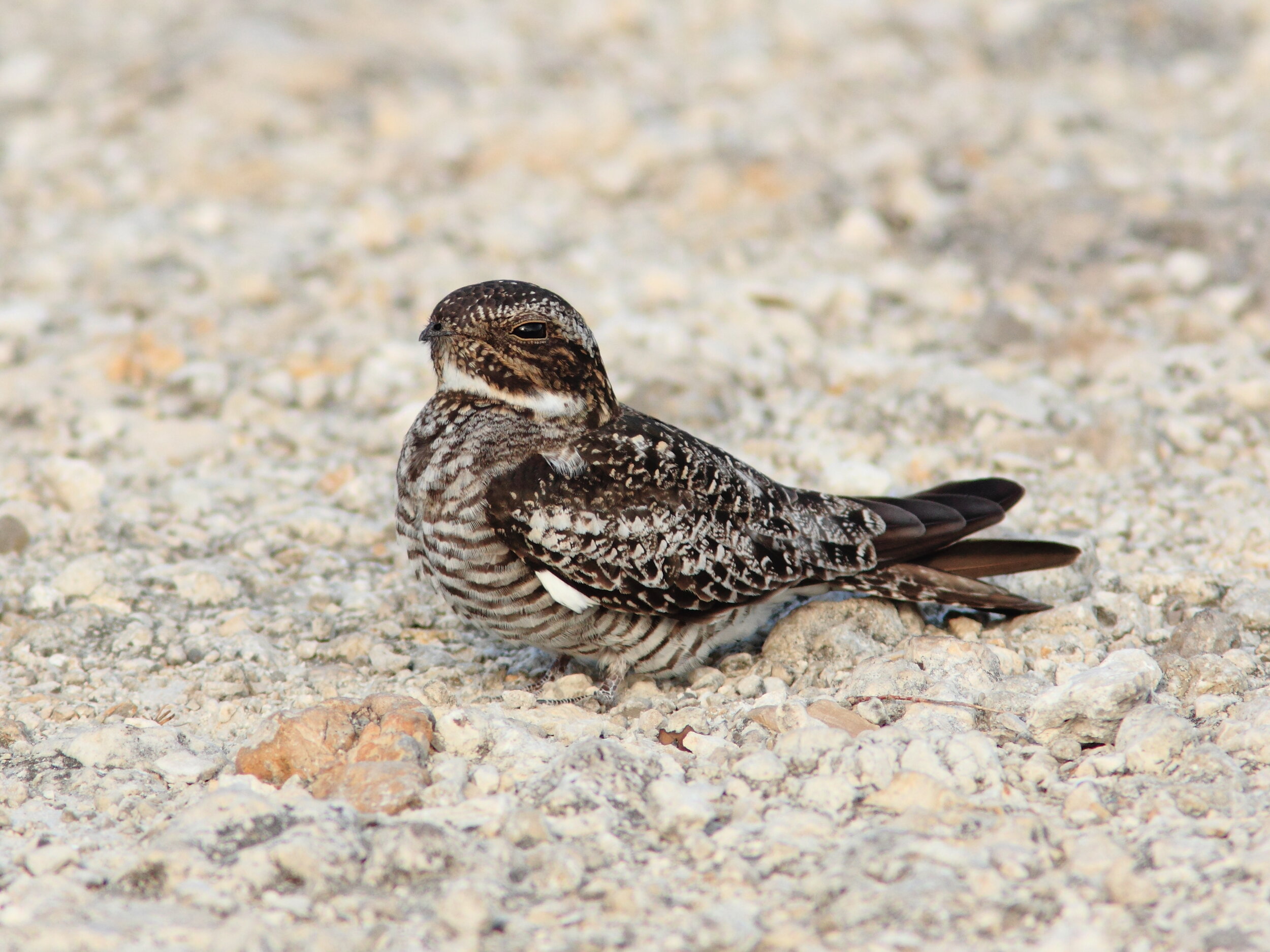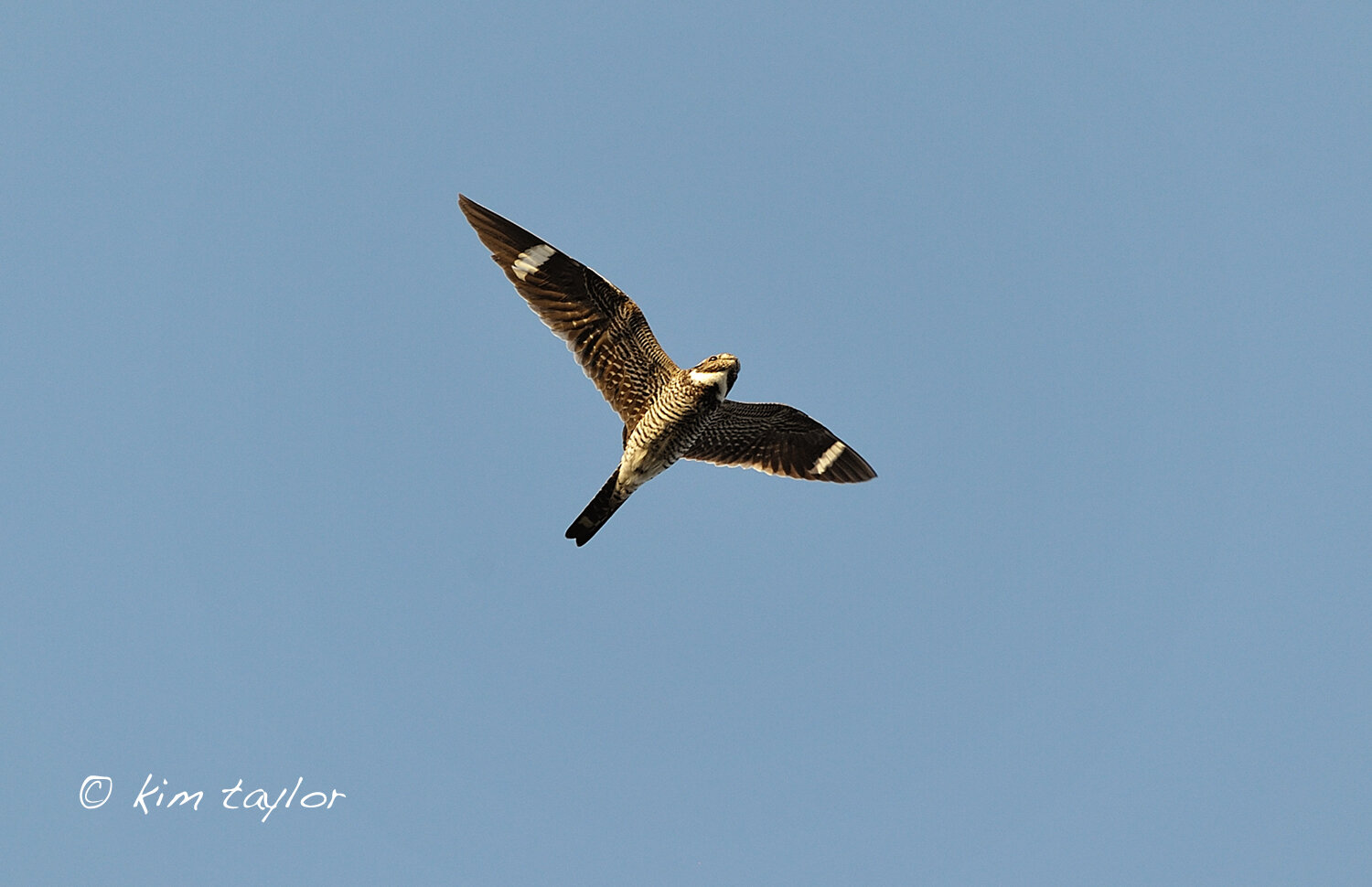(Chordeiles minor)
Status: Threatened (SARA); Special Concern (COSEWIC)
This means that without some form of action, they could disappear from Canada or the entire planet.
Identification guide:
Often heard before it’s seen, with a distinctive call that sounds like a nasal “peent."
Long thin wings with a distinct white band visible during flight.
Well camouflaged dark-mottled colouring that looks black from afar.
Song at www.natureinstruct.org/dendroica
Habitat & Behaviour
The call of the common nighthawk (Chordeiles minor) was once a familiar sound across New Brunswick. As an aerial insectivore, (meaning it feeds on insects while in flight) it will forage over most landscapes, from forest to meadow, from urban to agricultural lands. It is most active between dusk and dawn.
Its nest requirements are modest. It lays its eggs on the ground in little more than a small depression scraped in bare soil or gravel, and has been known to nest in unlikely settings such as gravel rooftops. A unique booming sound can sometimes be heard from the wings of this acrobatic flyer at the bottom of the steep dives made during courtship display flights.
Threats
Common nighthawk numbers are declining, as is the case for several other aerial insectivores. The reason for the decline is poorly understood. Key concerns revolve around potential declines in flying insects (their food source). Habitat loss or degradation may also play a role in some areas. On a local scale, individuals may be lost in collisions with vehicles, especially during migration, as nighthawks sometimes forage low over roads. Like all migratory birds, Common Nighthawks, and their nests and eggs are protected.
Ways You Can Help
Look for nesting nighthawks on your property in June to late July and consider limiting disturbance to these areas until there are signs that the young have left the nest or until early August.
Follow best management practices (BMP) with respect to use of insecticides (Contact NBDept of Agriculture, Aquaculture & Fisheries).
This project was undertaken with the financial support of Environment Canada.
References: Brigham et al. 2011 in The Birds of North America Online; COSEWIC 2007.
To find out more about Species at Risk conservation, contact our Conservation Manager, Carli Le Roux, below
or by calling (506) 457-2398.



